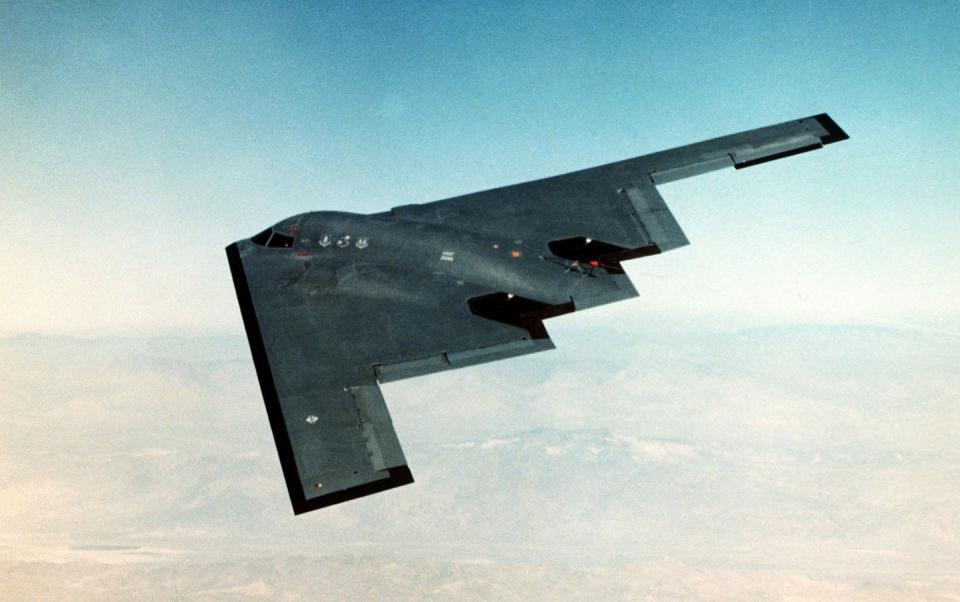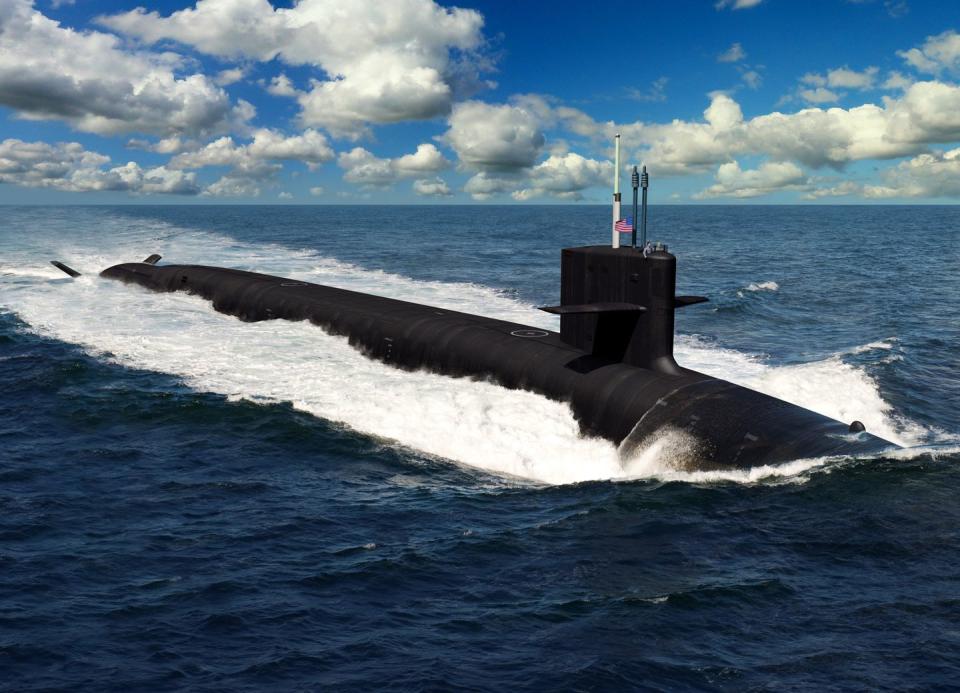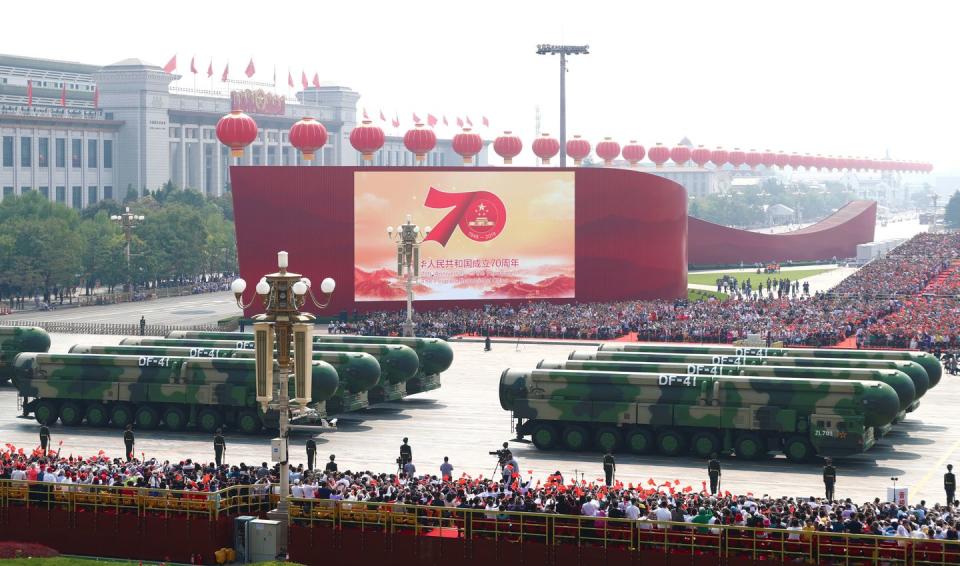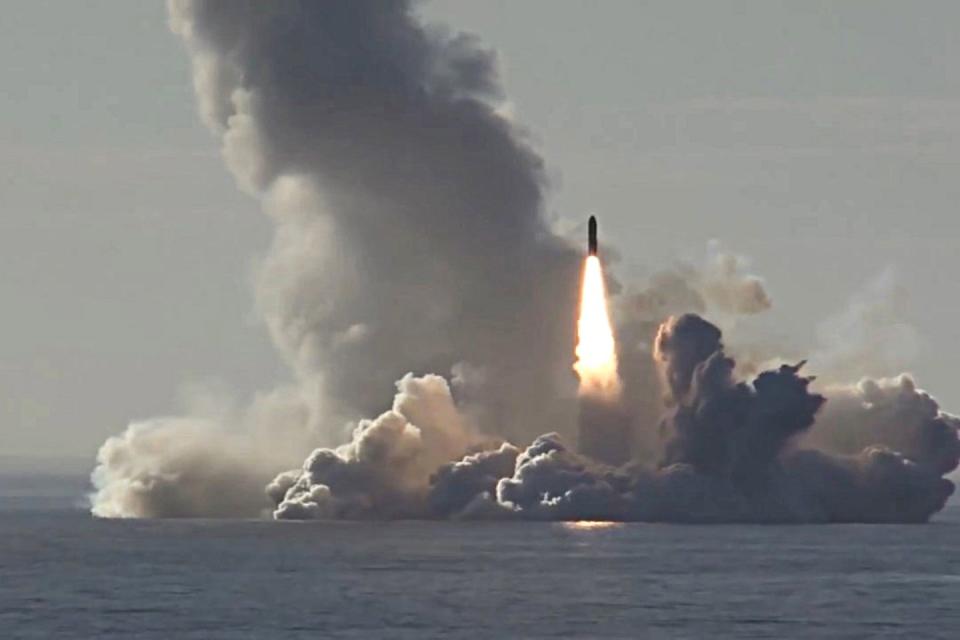How Biden Could Dramatically Revamp America’s Nuclear Arsenal
President Joe Biden is currently in the middle of a Nuclear Posture Review.
It's an opportunity for his administration to make its mark on America's nuclear arsenal and nuclear weapons policy.
The administration must balance its aging nuclear weapons against a Russia that could be more receptive to arms control, and a China with a growing nuclear stockpile.
The Biden Administration is currently conducting a top-down review of the U.S. nuclear weapons program—and it's shaping up to be the most complicated nuclear policy update in decades.
This "Nuclear Posture Review," a document that each incoming administration must produce, explains how the new president views America's nuclear weapons, how the country would use them, and how many nukes it plans to build. President Joe Biden's review should be particularly intricate, as it follows an agreement with Russia to extend a longstanding treaty to reduce weapons. And, the review comes amid China's apparent attempts to boost its own nuclear arsenal. The administration is expected to produce the document early next year.
✈︎ Don't miss our best-in-class military news. Join our squadron.
The Cambridge, Massachusetts-based Union of Concerned Scientists—a nonprofit organization focused on science advocacy—recently published a useful explainer on the Nuclear Posture Review process. The article answers some important questions about the review, including how often one is prepared, what a review addresses, why it's important, and also, importantly, what the review misses.
One big question for this review is how much of the U.S. nuclear stockpile Biden plans to refurbish. The United States has made minimal investments in its strategic nuclear weapons arsenal—including strategic heavy bombers, silo-based intercontinental ballistic missiles (ICBMs), and submarine-launched ballistic missiles (SLBMs)—since the end of the Cold War. Although many of those technologies have been modernized (like the Minuteman III missile), nuclear weapons eventually age out.

The U.S. strategic nuclear force is based on a triad of ICBMs, SLBMs, and bombers. Each brings advantages and disadvantages to the table, and theoretically the three complement one another to cover nearly every conceivable possibility. ICBMs are accurate and can be launched quickly, but the missiles are fixed in place and easy to target for destruction. SLBMs are not as responsive as their land-based counterparts, but are difficult to locate and sink. Bombers are the slowest nuclear delivery systems, but the presence of a crew means that they can be recalled from their targets at the last minute.

The U.S. risks all three legs of the triad aging out at once. The Minuteman III missile is scheduled to be replaced by the new Ground-Based Strategic Deterrent (GBSD). The B-1 and B-2 bombers will be replaced by the B-21 Raider bomber, and the Columbia-class missile submarines will replace the Ohio-class. All of this is scheduled to take place in the 2030s and later, and it's going to cost a lot of money.
Could the Biden administration allow a leg of the triad to age out, resulting in a dyad? Could the U.S. slim down to one nuclear delivery system, like the United Kingdom, resulting in a monad? Biden could cancel the B-21 Raider bomber, but the Air Force also plans to use it for conventional missions, and losing the B-21 would greatly reduce the service's long-range firepower in a conventional conflict. It could cancel GBSD, but then the U.S. would lose the ability to rapidly target an adversary's nuclear weapons. It could choose to defund the Columbia-class submarines, but subs are considered the safest and least vulnerable means of nuclear deterrence, an "ace in the hole" invulnerable to surprise attack.

Another question left unresolved is how the nuclear posture of other countries could affect America's. Of the nine nuclear-armed states in the world, three (Russia, China, and North Korea) could threaten the U.S. with nukes. North Korea's small arsenal is easily deterred, and even significant cuts would not change the nuclear balance with Pyongyang. The U.S. and Russia recently ended a key treaty on Intermediate Nuclear Forces, but the two countries did agree to extend a treaty limiting the number of strategic nukes for another five years. Is there room for further strategic arms reductions with Russia? Maybe.
Recent Chinese nuclear revelations complicate matters. China has traditionally been a fairly restrained nuclear power, with about 250 to 280 nuclear weapons divided among land-based missiles and submarines, plus a national policy to not turn to them first. But recent discoveries of at least 250 new missile silos point to a major expansion of the country's nuclear forces. Does this expansion matter? Could we still slim down our nuclear arsenal? Should we keep it at the existing force levels, or should we aim for numerical superiority over both Russia and China?

The U.S. could make a lot of choices with its nukes, but none come without tradeoffs. Is the U.S. willing to trade capability and flexibility for cost savings? Are there any nuclear capabilities that are obsolete? How much risk is Washington prepared to accept versus Russia, and versus China, and how will both of those countries view major changes to the U.S. nuclear posture? This is the complex web of questions the Biden Administration must confront—and they should not be handled lightly.
🎥 Now Watch This:
You Might Also Like


